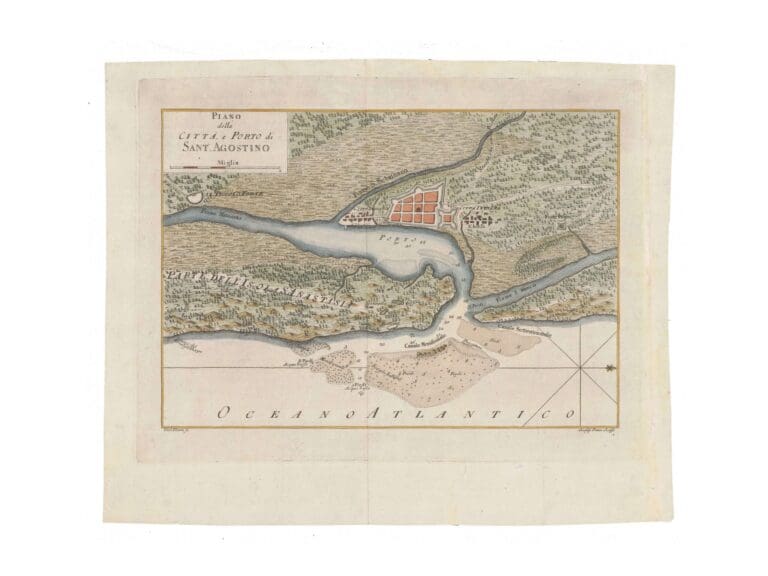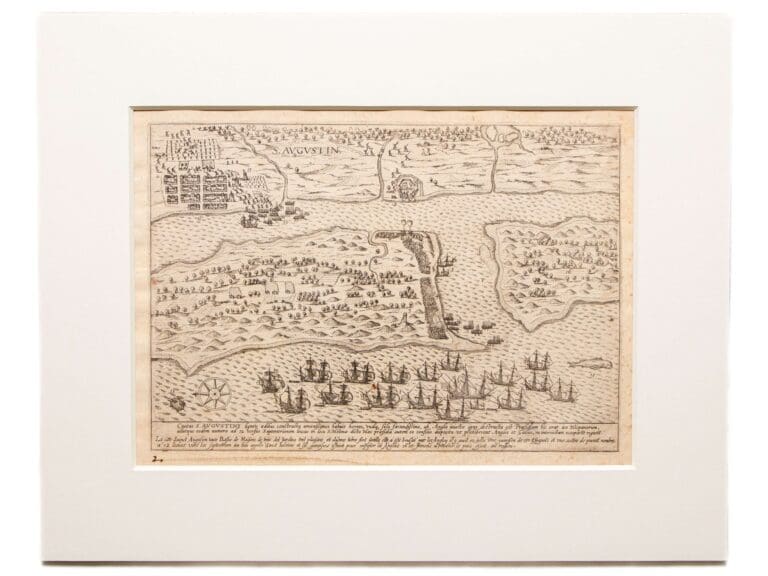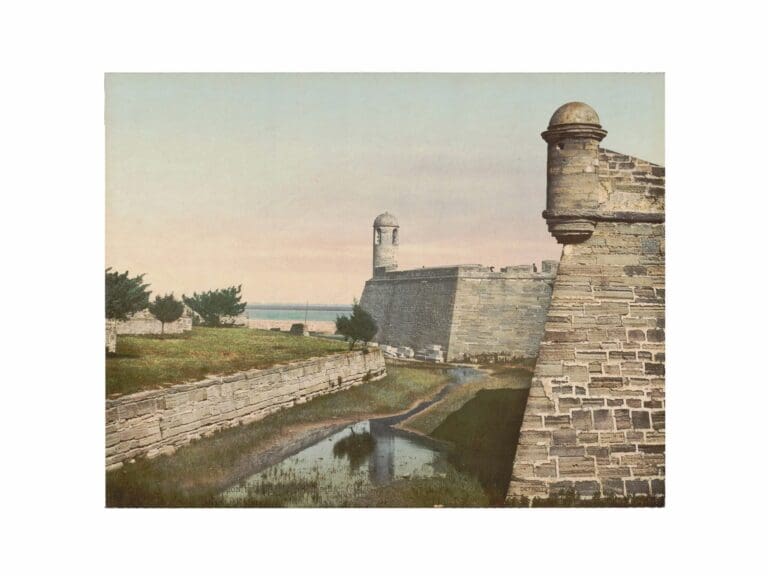Fort Mose (Forte Negro)
This map, published in 1763, shows the proximity of Fort Mose (here called Forte Negro) to the town of St. Augustine.
Courtesy of J. Thomas and Lavinia Witt Touchton
Hundreds of enslaved people forced to work in Britain’s North American colonies escaped slavery and self-emancipated in Florida from the late 1600s into the 1700s. Slavery was practiced in Spanish Florida at the time, but the Spanish crown offered those fleeing the British chattel system the opportunity to convert to Catholicism, establish communities, and, most importantly in the eyes of the Spanish imperial designers, help protect Spanish Florida from British invasion. With this in mind, Fort Mose, also known as Forte Negro, was created just north of St. Augustine’s Castillo de San Marcos.
Three Fast Florida Facts
- In 1693, Spain’s ruler King Charles II officially declared that liberty would be granted to enslaved people that fled to Florida from the British colonies, “so that by their example and by my liberality others will do the same.”
- Enslaved individuals who fled to Florida established Gracia Real de Santa Teresa de Mose, a Black settlement just north of Spanish St. Augustine, in 1738.
- When the British won colonial control of Florida in 1763, most Black Floridians living in and around St. Augustine left for Cuba.




